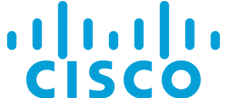Securing the Web with Cisco Web Security Appliance

Код курсу
CI-SWSA
Тривалість
2 Днів, 16 Ак. Годин
Опис курсу
Цілі
Вимоги
Програма курсу
Опис курсу
This comprehensive two-day hands-on training course prepares students to install, configure, operate and maintain the Cisco Web Security Appliance (WSA). The course also covers how to configure and deploy Cisco Web Security solutions.
Цілі
Upon completing this course, you will be able to meet these overall objectives:
- Describe the Cisco WSA in Detail
- Install and Verify the Cisco WSA in various deployment scenarios
- Deploy WSA Proxy Services
- Utilize WSA Authentication
- Configure WSA Policies
- Enforce Acceptable Use
- Defend Against Malware
- Configure Data Security Features
- Describe and Set Up Cisco Cloud Web Security
- Use Cisco AnyConnect Secure Mobility Client
- Perform Administration and Troubleshooting of Cisco WSAs
Вимоги
Attendees should possess the following background knowledge and skills:
- Basic Microsoft Windows navigation and keyboard proficiency skills
- Internet usage skills, including use of a browser and search tools
- TCP/IP services, including DNS, SSH, FTP, SNMP, HTTP, and HTTPS, is assumed
- Experience with IP routing is assumed
Програма курсу
- Module 0: Introduction
- Module 1: Reviewing the System
- Module 2: Installing & Verifying the Cisco WSA
- Module 3: Configuring Virtual Web Security Appliance Connector to Cisco Cloud Web Security
- Module 4: Deploying Proxy Services
- Module 5: Utilizing Authentication
- Module 6: Configuring Policies
- Module 7: Enforcing Acceptable Use
- Module 8: Enforcing Acceptable Use – Advanced Topics
- Module 9: Defending Against Malware
- Module 10: Configuring Data Security
- Module 11: Cisco Cloud Web Security
- Module 12: Using Cisco AnyConnect Secure Mobility Client
- Module 13: Performing Administration & Troubleshooting





